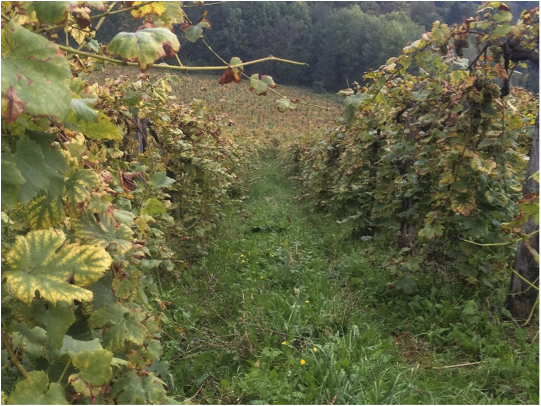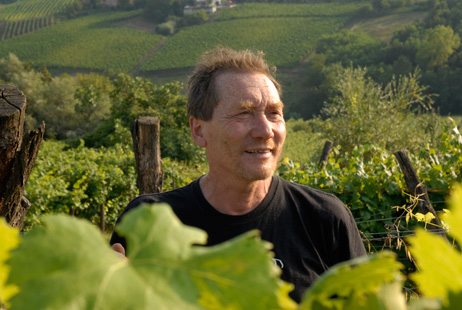Continued from Part 1…
Something from something
Here’s the rub. Nothing can come of nothing. The Roman poet and philosopher Lucretius expressed this principle in his first book of De Rerum Natura Principium:
Principium cuius hinc nobis exordia sumet,
nullam rem e nihilo gigni divinitus umquam

Transformation is integral to wine. In certain vineyards where the soils are hot and teeming, the humus sweet and friable, where grass, plants, herbs and flowers thrive, there is natural exchange between the vine and its environment. This is the life in the wine.
Life amongst the vines translated into life in the wine recalls Ovid’s observation, when he writes in Metamorphoses: Omnia mutantur, nihil interit (all things are but altered, nothing dies).
No species remains constant: that great renovator of matter
Nature, endlessly fashions new forms from old: there’s nothing
in the whole universe that perishes, believe me; rather
it renews and varies its substance. What we describe as birth
is no more than incipient change from a prior state, while dying
is merely to quit it. Though the parts may be transported
hither and thither, the sum of all matter is constant.
Why is this so important? Stefano Bellotti describes the very roots of transformation in wine:

A single plant of wheat – a single plant – cultivated naturally, penetrates up to 12 metres with its roots. And produces up to 5 kilometres of ancillary roots. A plant of wheat as it is cultivated today, agro-chemically, penetrates into the soil only 5-10 centimetres and produces only a few 100 metres of subroots. So, that’s a reduction 100 times of the root system.
What dialogue can a plant have with the mineral world, when its ability to penetrate with its roots is so compromised, thanks to mistaken agronomic methods that cause desertification? In the case of wheat, we have a plant that no longer nourishes us. It produces intolerances, allergies, the need for dietary supplements, etc.
Before, if you ate bread, it was bread. People could live nearly on bread alone. Because bread contained nearly everything man needs. We know that’s no longer true today.
When we talk about wine, we’re talking about a plant that should be able to penetrate deep into the soil. And it’s by definition a terrestrial plant. So among all the fruits, grapes should be the richest in mineral salts. That’s why wine is wine. Because mineral salts are transformed into aromas during fermentation. So everything from the mineral world – the latent flavours – are transformed by the magic of fermentation into actual flavours. If we take a plant that should work at a depth of 50-60 metres, but thanks to a senseless agronomic method, works at 60 cm… – because today vines work at a depth of 50-60 cm., depending on the soil – they’ll obviously lack everything that makes a grape a grape, or a Cortese a Cortese, etc. So you have to reconstruct in the winery tastes which are more or less recreated and standardised.

Dialogue with the mineral world, complex root systems providing nourishment to the grape through the vine, latent flavours becoming actual flavours – natural wine is about realising all this potential. Transformation is not taking and changing for the sake of it – it naturally renews and varies its substance. The growers that work with the land, who, having used its resources, help to re-animate it, by allowing it to replenish itself, are simultaneously custodians, interpreters and gentle shapers. This is no way a kind of neglect, it is far easier to destroy than to rebuild, to exploit rather than work in harmony with. Eventually, when good practice is followed, the healthy labour in the natural vineyard (using the word labour in both its meanings) progresses through assured rhythms and cycles – the transformations are not brutal and short, rather the vineyard is a living record of the year and the wine that issues from its grapes bears the significant imprint of that vintage.
The winemaker captures – then liberates…
Some of our favourite wines have an aerian quality to them as if the vignerons have been channelling, translating and transforming rather than constructing rigorous templates or working by objective analysis to create a common product.
Thinking inside the box
And now let us return to our laboratory-bred sheep. It is wonderful to understand the physical, chemical and micro-biological processes that describe molecular transformations that make wine what it is, but it seems that this self-same knowledge relentlessly drives the oenological desire for controlled outcomes. To achieve these outcomes you must remove the natural elements from the equation and thus the wine becomes denatured through manifold interventions, its original identity stripped for reshaping, in short a kind of vinous plastic surgery. “Nature hath given you one face and you make yourself another.”
Elena Pantaleoni expounds on this subject:

The first year they teach general chemistry. Then organic chemistry. What it’s made of. Then they teach you how to make wine. So, what is wine? They explained that wine is a series of things… that are obviously not natural. You take the grape and work it so that it becomes a product, basically, like Coca Cola.
Because errors are not admissible, they teach you. You can’t make an error. So natural wine, for them, is an error. You have to know exactly what you want. Then do it. And you need to be capable of achieving the predetermined product.
They teach you an industrial approach, the marketplace. They teach you how to make a saleable product.
They don’t teach you history. They don’t teach why you make wine. Or who did it before and how. No, they tell you: “today you plant.” And to get maximum yields, you need to do this, that etc. This is the right way to plant. If you have this kind of soil, you do this. That way you’re sure to have “X” production.
Various natural vignerons have encountered this strident scientific didacticism that preaches the one true winemaker’s path. Bertrand Celce describes Rene-Jean Dard’s education at the hands of oenological Jesuits.

Rene-Jean Dard had already a long experience in winemaking as he had helped his father… His father made wine for the family consumption and a little bit for sale. The teaching in Beaune was for conventional, additives-loaded winemaking, and the only time they had a courser about organic management, that was to mock it and warn about the risks. Actually that’s in the school that Rene-Jean learned about SO2, his father having never used any in his winemaking. SO2 was one additive amongst many other that he was taught to use extensively in Beaune.
Natural vignerons celebrate terroir for what it is. The way they communicate with that terroir is what gives the wines their personality. Their activities are dedicated to converting nature to….nature. When we drink their wines we are drinking a transformation that is not formulaic or circumscribed, but natural and imprecise.


Pingback: The art & nature of wine transformation: Part 1